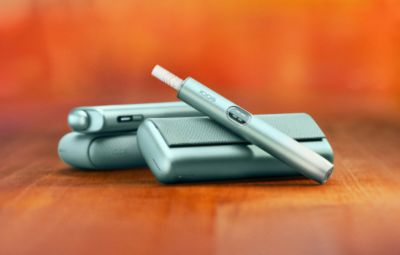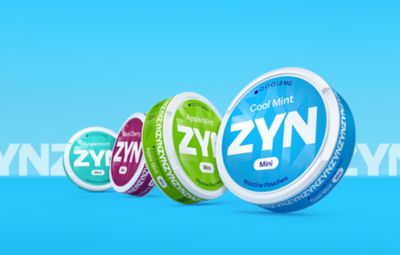Shisha vs Vapes: What's the Difference?
While the substances drawn from both shisha and vapes may look similar, they are two very different products. Both shisha and vapes are well-known products, but they differ in many ways - including how you use them, what they’re used for and their ingredients.
To fully understand how shisha and vapes compare, you’ll first need to know what they are. Read on to learn more about what shisha and vaping are, and the ways in which they differ from one another.
What is the Difference Between Hookah vs Shisha?
The terms hookah and shisha are often used interchangeably, but they don’t actually mean the same thing.
- Hookah refers to the apparatus, which is the water pipe device itself.
- Shisha refers to the flavoured tobacco mixture that is smoked in a hookah.
To make things clearer, here’s a side-by-side look at hookah vs shisha:
Aspect |
Hookah |
Shisha |
What it is |
The water pipe device itself. |
The flavoured tobacco mixture smoked in the hookah. |
Purpose |
To cool and filter the smoke through water before inhaling. |
To provide the smoke and flavour for the smoking session. |
Components |
A multi-part device including a bowl, stem, water base, hose(s), and mouthpiece. |
A mixture of tobacco, sweeteners like molasses or honey, and flavourings. |
Regional usage
Different regions use different names for the hookah device:
- Nargile or Narguile: This name is common in Turkey and the Balkans.
- Hubble-bubble: This is an older British slang term.
- Waterpipe: A more generic English term.
Some regions use “shisha” broadly to describe both the apparatus and the tobacco.
What is a Shisha Vape?
Today, some adult users use shisha vapes (sometimes called vape hookah). These are designed to replicate the clouds and flavours of traditional shisha while offering the convenience and portability of a vape.
What is Vaping?
Generally speaking, vapes are electronic devices that heat e-liquid (typically containing nicotine) to produce a vapour. Vaping is the act of drawing in this vapour. Vapes should only be used by adult smokers who would otherwise continue to smoke. Vape products could be a better choice for many adult smokers who are looking to quit. For example, VEEV ONE is a better choice than continuing to smoke cigarettes.
| Important information: VEEV ONE is not risk-free. |
Often, vape devices store e-liquid in a tank or pod that is part of the device. The e-liquid is then heated through a coil to produce the vapour. You can find out more on how this works in our article ‘What Is Vaping?’
Vaping vs Shisha: What Are the Differences?
When it comes to shisha vs vapes, there are a number of differences to explore, including those in the table below.
|
Shisha |
Vapes |
Ingredients |
Shisha is typically made of tobacco, molasses and flavourings. |
Vape e-liquid usually comprises nicotine, flavourings, Propylene Glycol (PG) and Vegetable Glycerine (VG). |
Vapour/smoke |
Shisha generally produces smoke. |
Vapes generally produce vapour. |
Heating device |
Often, shisha is heated by coal, charcoal or wood embers. |
Vapes often utilise a vape coil, which is heated by the device’s battery to then subsequently heat the e-liquid. |
Flavours |
Shisha can be available in a variety of flavours. However, as shisha devices are often less compact than vapes, it might be trickier to switch from one flavour to the next. |
Vapes can be available in a variety of flavours. Many devices are built with ease of use in mind, so switching between flavours can be simple. For example, with VEEV ONE, changing flavours (or pods) is easy.
|
Is Shisha More Harmful Than Vaping?
Shisha can contain some of the same chemicals found in cigarette smoke, including tar and carbon monoxide. In comparison, some vapes produce significantly less of these harmful chemicals. That said, whether vaping produces less harmful chemicals than tobacco smoke will depend on the product in question. For example, VEEV ONE emits on average 99% lower levels of harmful chemicals compared to cigarettes.* The VEEV ONE product and liquid have undergone scientific assessment, too. What’s more, VEEV ONE liquids are made using high quality ingredients.
| Important information: this does not necessarily equal a 99% reduction in risk. VEEV ONE is not risk-free. |
* 99% less” represents the average reductions in levels of a range of harmful chemicals (excluding nicotine) compared to the smoke of a reference cigarette. See Important Information on IQOS.com.
Learn more about vaping and why you should make the switch from smoking to this smoke-free product via our Discover Vaping page. Here, you’ll also learn more about the VEEV product line, and what devices like VEEV ONE have to offer.
Smoke-free products are not risk-free and provide nicotine, which is addictive. The best decision any adult smoker can make is to quit tobacco and nicotine use altogether. Smoke-free products are not alternatives to quitting and are not designed as cessation aids.
This article is for general information and educational purposes. Some of the information in this article is based on external, third-party sources and we make no representations or warranties of any kind regarding the accuracy, validity or completeness of such information.








